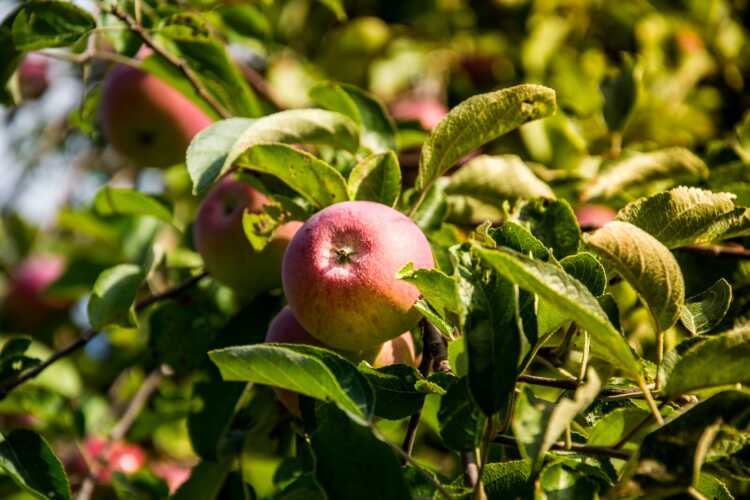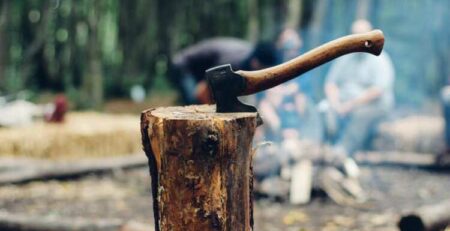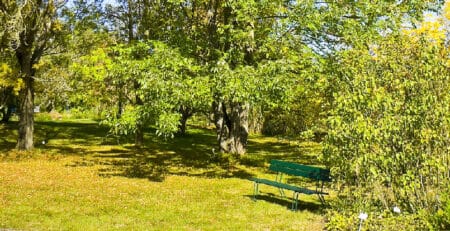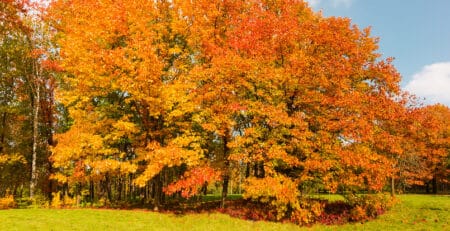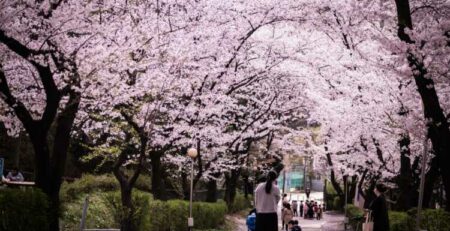How to Prune an Apple Tree
Having apple trees in your garden can be a great joy. However, if you do have apple trees there’s something you need to understand and get the hang of, and that is how to prune an apple tree. The ideal time to consider pruning your apple trees is during the winter months or in the early spring. This is previous to new growth starting. The tree is dormant when it has shed the leaves before growing buds. Pruning should be done before any new growth starts. Which is usually in spring. During this time the cuts heal quickly. In the winter, the cuts are open to the elements meaning they won’t heal as quickly. It can also mean that the tree is likely to be prone to disease as it can’t grow and heal quickly.
Pruning can seem difficult and complicated, and that can often be one of the reasons people are put off having trees such as apple trees in their gardens. However, once you learn how to, you will find that it is relatively simple and easy to do. With that in mind, here are some of the things to consider when it comes to pruning an apple tree.
 Why do you need to prune your apple trees?
Why do you need to prune your apple trees?
One of the big things to think about is understanding why you need to prune apple trees in the first place. There are three reasons why you need to prune your apple tree. The reasons are:
- To create a structure for the tree enabling it to be easily maintained.
- Enables you to remove diseased, damaged or dead wood. Helping you to have a healthy and thriving tree.
- Allows any sunlight to reach ripening fruit. Helping the tree to thrive.
You may have already noticed that the fruit that seems to be the best on your apple tree is located at the top. This is not unusual for fruit trees and this is because that area gets the direct sun. It’s a good idea to keep that information in your mind when pruning your apple tree. Deciding the right branches to cut to help all potential fruit thrive. This is something called optimum fruiting. This is when you expose the fruit to as much sunlight as possible. This is when you can also look at tree shaping. The things to consider would be covered in the next steps.
Tree shape
The biggest reason for pruning is so you can enable sunlight to be able to reach all potential fruit on the tree. There are a few ways in which you can do this, including the tree shape. One of the first shapes to consider would be a cone like shape. There are also options such as creating a more rounder tree or using the shape of a vase for visual purposes. The cone like shape, or conical shape gives great results and is one of the common tree shapes to consider. However, before you can even grasp the correct tree shape you need to appreciate and understand how to prune the tree correctly.
Identifying the growth and flower buds
It is a good idea to understand and notice the changes within your tree. No apple tree will be the same as another. This can help you when it comes to pruning and what will work well for future growth. There are a few things you might need to notice and there are two buds to look out for. The flowering bud and the growth bud. You will find a mixture of these two buds on your apple tree, and it is essential that you understand the differences between the two buds.
What does a growth bud look like?
A growth bud is smaller than a flower bud. They grow close to the stem or the branch. They are pointed and can look a little scaly on the surface.
What does a flower bud look like?
The flower buds are bigger and wider than the growth buds. You can see a big difference between them, usually around early winter time, which is approximately the month of november. Flower buds grow on spurs which are stubby and shorter. The flowering buds are what will become the fruit once the process has completed and the fruit has ripened in the sunlight.
How to prune the buds?
When it comes to pruning the growth bud it is important to understand this can control the overall growth of the apple tree. You choose the direction the bud is facing and there the direction in which the new bud will grow. Pruning above the growth bud that is facing internally will result in the new shoot going in that direction. A good idea would be to prune outward and enhance growth in that way. It can help to ensure that sunlight reaches all flowering buds that will turn into fruit.
The Types of Pruning Cuts
There are two types of pruning cuts that will help you when it comes to your apple tree. Here they are in more detail:
Thinning cuts
A thinning cut will remove whole branches and bring them back to the point of origin in which they meet other branches. This thins the tree dramatically, but allows more sunlight to reach internal branches that may have flowering buds. The thinning cut is one of the more popul;ar options when it comes to pruning your apple tree.
Heading cuts
The heading cut is slightly different. You can make these cuts along the length of the apple tree branch, and by doing this sort of cut, you encourage more growth below the cut. Heading cuts are more necessary when dealing with younger trees that develop more new branches. A more established tree won’t have the same level of reproduction of new branches.
Getting started
There is a rule of thumb when it comes to pruning your apple tree. It means getting rid of dead, diseased and damaged branches and stems so that you can start to make the tree healthy and enable it to thrive. One of the most recognisable options to consider is the dead branches. They’ll be weak and easily snap. Diseased branches might be harder to identify but you are looking for the branches and stems that look different to the others, perhaps in colour. Damaged branches might be harder to spot again, but this is where the branches and stems have perhaps rubbed against one another, they may have partially snapped or had a lot of weight from the year befores apples on them from other branches above.
Problems you might face
There are a few issues that you might come into contact with when pruning your apple tree. It won’t always be as simple as just getting rid of the dead, damaged and diseased branches and stems. There are other factors to consider. Here are some of the problems that you might face:
Suckers, whorls and water sprouts
There are certain stems on the main branches that will never give you buds or bear fruit but will produce dense and leafy foliage which will act as shade. These need to be removed. They are known as whorls, suckers and water sprouts. These are often the result of ill advised heading cuts on mature trees. However, they do need to be removed and once they are gone you can easily start to see the shape of the tree forming. Which will then help with final pruning and shaping of the apple tree. Getting rid of these with thinning cuts as tightly to the branch or trunk as possible is the best course of action to get rif of these once and for all.
Downward growing
You may face an issue with branches that are making it difficult to shape the tree and it can create a dense framework. These need to be removed. Downward groing branches will also shade and be unproductive when it comes to crossing branches. They can then rub together and then become diseased. They can also cause issues with branches that can mean that the fruit will not grow and be shaded.
What about pruning the flower buds?
Buds on spurs that are flower buds are the one that will ultimately grow into fruit and these are the branches that you want to protect and ensure that you prune correctly. However, if you feel that they are crowded then you may need to consider that this will then produce smaller fruit that might not ripen properly. These are called spur systems, and should be pruned to only leave four to five flower buds which will give your fruti the fighting chance of growing to a decent size. This will help you to shape the tree as well to make sure that each branch is healthy.
When it comes to pruning an apple tree, it may seem overwhelming at first. But once you follow the advice, take your time and be observant when it comes to the shape and looking at specific branches and stems, you will be able to ensure that you manage to prune your tree effectively. Giving you a thriving harvest of ripe apples.

